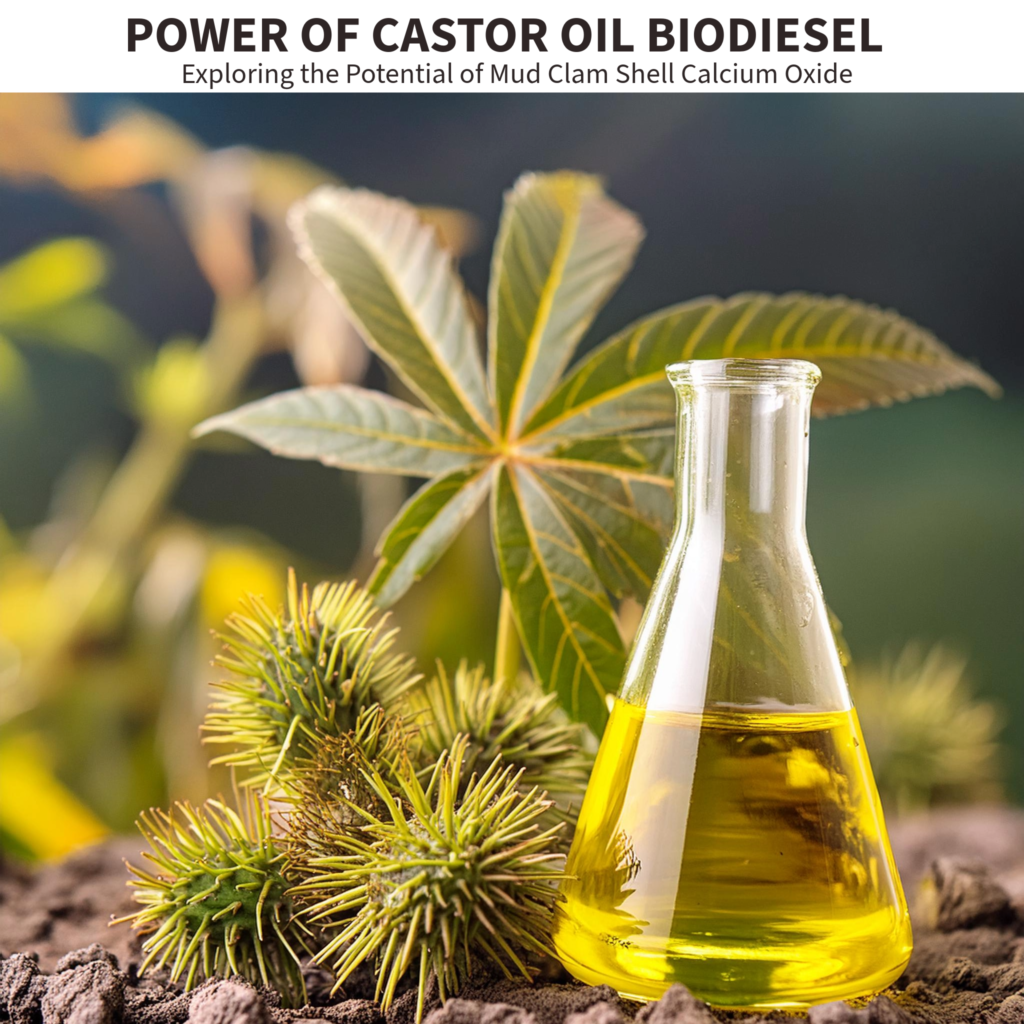Unleashing the Power of Castor Oil Biodiesel: Exploring the Potential of Mud Clam Shell Calcium Oxide

INTRODUCTION
WELCOME TO RUNZOER INDIA , where we delve into the fascinating world of renewable energy sources and their promising applications. Today, we are excited to unveil the untapped potential of castor oil biodiesel and its profound connection to mud clam shell calcium oxide. Over the past decade, the quest for sustainable alternatives to fossil fuels has gained momentum, and castor oil biodiesel has emerged as a front-runner. In this article, we will explore the unique properties of castor oil, the process of biodiesel production, and how the incorporation of mud clam shell calcium oxide can optimize its performance. Join us as we embark on a journey through the realms of renewable energy innovation, bringing you the latest research and insights in a professional and engaging tone.
Understanding Biodiesel
Biodiesel is an environmentally friendly, renewable fuel alternative, closely resembling traditional diesel, and primarily sourced from oily plants such as castor, soybean, or canola, as well as from waste cooking fat and animal oils.
This biodegradable fuel has gained widespread acceptance as a substitute for fossil diesel, often blended with conventional diesel in varying proportions. It is compatible with nearly all diesel engines and vehicles, requiring no engine modifications. Notably, biodiesel boasts enhanced safety, lower toxicity, and reduced exhaust emissions compared to conventional diesel. Its most compelling feature is its carbon-neutral nature, as its combustion results in no net carbon dioxide (CO2) emissions, unlike mineral diesel.
The Significance of Biodiesel Amidst Growing Demand
The escalating global demand for energy in the face of dwindling fossil fuel reserves necessitates the exploration of alternative, sustainable energy sources. Biodiesel emerges as a crucial solution, offering numerous technical advantages over conventional diesel. With its inherent lubricity, low toxicity, renewable origin, superior flash point, biodegradability, minimal sulfur content, and reduced exhaust emissions, biodiesel production is increasingly recognized as a critical component of the world’s energy future, poised to potentially supplant fossil fuels as the primary energy source for vehicles and machinery.
Production Process of Biodiesel
To obtain biodiesel from tallow, vegetable oil, animal fat, or waste oils, a chemical reaction is initiated. This transformation comprises three stages:
- Base-catalyzed transesterification of the oil
- Direct acid-catalyzed transesterification of the oil
- Conversion of the oil to its fatty acids, followed by biodiesel
Notably, the base-catalyzed transesterification process stands out as the most commonly used and cost-effective method, requiring low temperatures and pressures and delivering a conversion yield of approximately 98%.
A Revolutionary Approach: Transesterification of Castor Oil with Mud Clam Shell Catalyst
Transesterification involves a chemical reaction between a triglyceride and an alcohol to produce esters and glycerol. The exchange of an alcohol’s R group with the ester’s R’ group is facilitated by introducing an acid or base catalyst to convert natural fats and oils into fatty acid methyl esters (FAME) or biodiesel.
Some of the suitable oils for biodiesel production are derived from crops like palm, soybean, or rapeseed. However, despite having higher viscosity compared to other vegetable oils, castor oil proves to be a promising feedstock for biodiesel production due to its absence of sulfur, a greater cetane number, indicating better ignition quality, and higher oxygen content, promoting more complete combustion than other oils. Additionally, castor oil exhibits superior lubricity compared to oils with similar carbon chain-length fatty acids.
The high content of ricinoleic acid in castor oil imparts better performance in carrying out the transesterification process for biodiesel production, making it the best vegetable oil for this purpose.
Transesterification of castor oil can utilize both homogeneous and heterogeneous catalysts, but studies indicate that using heterogeneous catalysts is more advantageous. These catalysts can be readily separated, regenerated, and recycled, leading to lower costs and fewer purification steps. Heterogeneous base catalysts also eliminate the need for acid neutralization and water removal required by homogeneous base catalysts.
During transesterification, the triglyceride molecule in castor oil reacts with alcohol in the presence of a catalyst to form biodiesel and crude glycerol. Methanol, or ethanol, is commonly used, with potassium or sodium hydroxide serving as the base catalyst.
Experimentation with different catalysts has shown that using calcium oxide as the heterogeneous catalyst for transesterification of castor oil has garnered attention due to its cost-effectiveness and abundant availability in nature.
The mud clam shell-catalyzed transesterification process using calcium oxide as the catalyst has proven to be optimal for achieving high biodiesel yields. Moreover, the calcium oxide catalyst can be reused multiple times after being separated, washed with n-hexane, and recalcined, making it a sustainable choice.
The suitability of calcium oxide as a catalyst for large-scale biodiesel production has been confirmed through studies of its physical and chemical properties and the optimization of parameters for the transesterification of castor oil. Notably, calcium oxide’s reusability, environmental friendliness, and minimal post-treatment requirements further contribute to its practicality and cost-effectiveness for commercial biodiesel production.
In conclusion,
While castor biodiesel can be directly obtained from raw oil, the majority of biodiesel production involves utilizing waste and used oil, which is beneficial for the environment. With biodiesel emerging as a potential renewable energy source, its demand is expected to grow, potentially replacing diesel derived from petrol in the near future. Castor biodiesel is poised to play a significant role in this transition.
